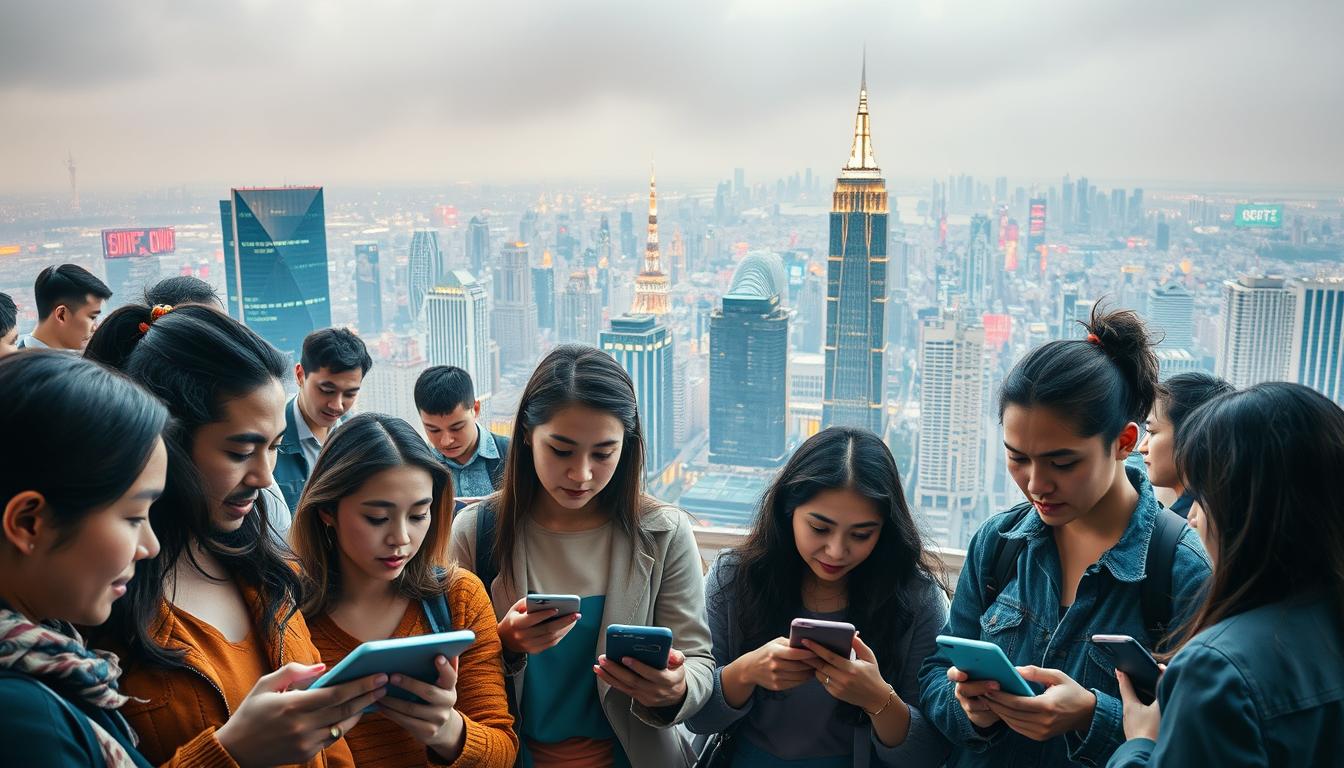ChatGPT has taken the world by storm, becoming one of the fastest-growing artificial intelligence tools in history. Within just five days of launch, it attracted over 1 million users, showcasing its instant appeal. Today, the platform serves nearly 400 million weekly users, with projections aiming for 1 billion by 2025.
This AI-powered assistant has transformed industries, from education to marketing and customer support. Students rely on it for research, businesses automate tasks, and professionals streamline workflows. Despite being banned in six countries, its global reach remains undeniable.
More than just a tool, ChatGPT has become a cultural phenomenon. It reshapes how people work, learn, and communicate daily. Its rapid adoption proves how deeply AI integrates into modern life.
Key Takeaways
- ChatGPT gained 1 million users in just five days.
- Currently serving 400 million weekly users.
- Projected to reach 1 billion users by 2025.
- Widely used in education, marketing, and customer service.
- Banned in six countries but remains globally accessible.
- Redefines work, learning, and communication.
Introduction: The Rise of ChatGPT
Breaking records overnight, ChatGPT’s user growth stunned even Silicon Valley veterans. Launched on November 30, 2022, it outpaced Instagram’s growth by 150x and hit 100 million monthly users faster than TikTok—just two months versus nine.
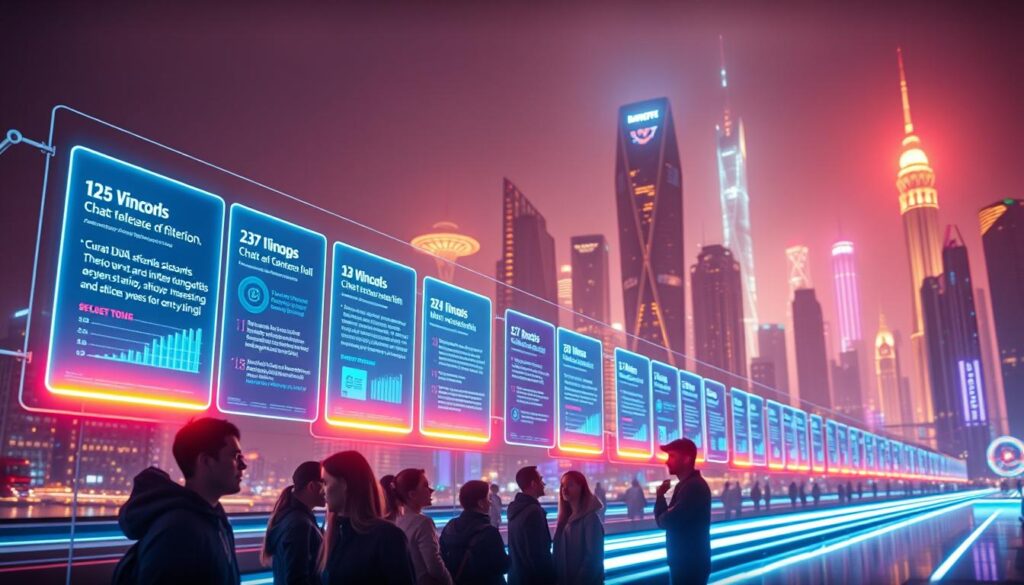
Unlike Netflix (3.5 years) or Spotify (5 months) to reach mass adoption, ChatGPT’s free access fueled viral demand. Skeptics questioned its accuracy, but practical applications—from drafting emails to coding—quickly silenced doubts.
Key drivers behind its rise:
- Natural language processing that feels human-like.
- Multimodal abilities (text, images, code).
- No paywall during critical early adoption.
| Platform | Time to 100M Users | Launch Year |
|---|---|---|
| ChatGPT | 2 months | 2022 |
| TikTok | 9 months | 2016 |
| 2.5 years | 2010 |
This trajectory set the stage for its dominance across industries—explored next.
ChatGPT User Growth: A Record-Breaking Journey
No AI tool in history has matched ChatGPT’s explosive growth trajectory. Launched in November 2022, it shattered records by reaching 1 million users in just five days. By early 2023, that number ballooned to 30 million, proving its viral appeal.
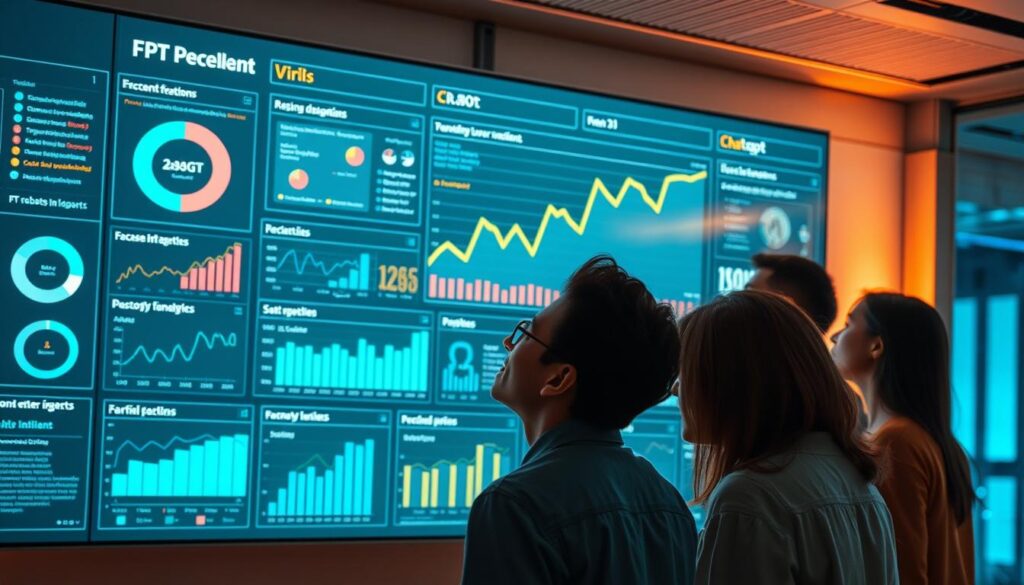
From 1 Million to 400 Million: Key Milestones
The platform’s user growth defied expectations. Here’s how it scaled:
- 5 days: 1 million users
- January 2023: 30 million
- November 2023: 100 million
- February 2025: 400 million (projected)
Pandemic-era digital demand and seamless API integrations fueled this rise. Schools and businesses adopted it rapidly, causing traffic spikes during academic terms.
Comparing ChatGPT’s Growth to Other Platforms
ChatGPT outpaced giants like Netflix and Instagram. Threads (Meta’s Twitter rival) hit 1 million users in 1 hour—yet ChatGPT’s sustained growth eclipsed even that.
| Platform | Time to 1M Users | Year |
|---|---|---|
| ChatGPT | 5 days | 2022 |
| Threads | 1 hour | 2023 |
| 2.5 months | 2010 |
Enterprise adoption post-2023 cemented its staying power. Unlike fleeting social media trends, ChatGPT’s utility ensured consistent user growth.
Who Uses ChatGPT? Demographics Breakdown
The demographic breakdown of ChatGPT’s audience reveals fascinating trends in tech adoption. While the platform serves millions globally, certain groups dominate its user base. These patterns help explain how artificial intelligence tools spread across different segments.

Age and Gender Distribution
Young adults lead in adopting this technology, with 45% of users under 24 years old. Another 33.52% fall between 25-34, showing strong millennial engagement. Only 18.35% of users are aged 35-44.
A noticeable gender gap exists among chatgpt user groups. Males represent 64.32% of the audience, while females account for 35.68%. This aligns with broader tech adoption patterns where males often dominate early-stage usage.
Socioeconomic Status of Users
Income levels show surprising insights about accessibility. 64.03% of users report low-income status, likely including students and freelancers. Only 35.4% are full-time employed professionals.
Household data adds another layer—41.21% come from 3-4 person homes. This suggests family environments where multiple members might share access. Geographic analysis reveals higher adoption in urban areas with strong internet infrastructure.
These demographics highlight how different groups have used chatgpt for varied needs. From students seeking homework help to professionals automating tasks, the platform serves diverse purposes across all users.
Top Industries and Professions Using ChatGPT
From classrooms to corporate offices, AI-powered assistance is reshaping daily operations. Over 92% of Fortune 500 companies now rely on ChatGPT, while educators and marketers report transformative efficiency gains. Below, explore how key sectors harness this tool.

Education and Research
Nearly 40% of college students use ChatGPT for assignments, from essay drafting to coding practice. Professors leverage it for grading automation, while researchers accelerate literature reviews. One study found 75% faster data analysis in academic settings.
Marketing and Content Creation
Teams achieve 3x more content output by automating blogs and social posts. ChatGPT generates SEO-friendly drafts, freeing creators for strategy. A survey revealed 25% of firms save $50K–$70K yearly by reducing freelance costs.
Customer Service and Support
AI chatbots slash resolution times by 25%, handling FAQs and ticket sorting. Enterprises deploy customized versions for 24/7 support. One telecom giant reported a 30% drop in call-center workloads post-integration.
| Industry | Adoption Rate | Key Benefit |
|---|---|---|
| Education | 40% students | Faster research |
| Marketing | 92% Fortune 500 | Cost savings |
| Customer Service | 25% efficiency gain | 24/7 support |
These professional use cases showcase ChatGPT’s adaptability. As more users discover its potential, adoption will keep climbing.
ChatGPT Traffic and Website Insights
Understanding ChatGPT’s website metrics reveals its massive digital footprint. With 5.19 billion monthly visits and 601.5 million unique visitors, the platform rivals top global websites. Users spend an average of 8 minutes and 13 seconds per session, reflecting deep engagement.

Monthly Visits and Unique Visitors
Direct traffic dominates at 79.77%, showing strong brand recognition. Only 9.36% comes from referrals, unlike content-heavy sites like Wikipedia. Seasonal spikes occur during academic terms, as students leverage it for research.
Bounce Rate and Time Spent
The bounce rate stands at 38.7%, slightly higher than Google’s 37.73%. However, pages per visit metrics outperform many competitors:
- YouTube: 24:28 avg. session
- Wikipedia: 8:44 avg. session
- ChatGPT: 8:13 avg. session
Mobile users account for 62% of visits, but desktop sessions last 20% longer. The iOS app launch shifted traffic patterns, with app users showing higher retention.
| Metric | ChatGPT | Industry Avg. |
|---|---|---|
| Bounce Rate | 38.7% | 45-55% |
| Pages per Visit | 3.2 | 2.1 |
These insights confirm ChatGPT’s sticky user experience—whether for quick queries or extended tasks.
Global Reach: ChatGPT Users by Country
Cultural and political factors shape how different nations engage with AI tools. The platform’s adoption varies dramatically—from widespread use in tech hubs to complete bans in certain regions. Users access it differently based on local infrastructure and regulations.
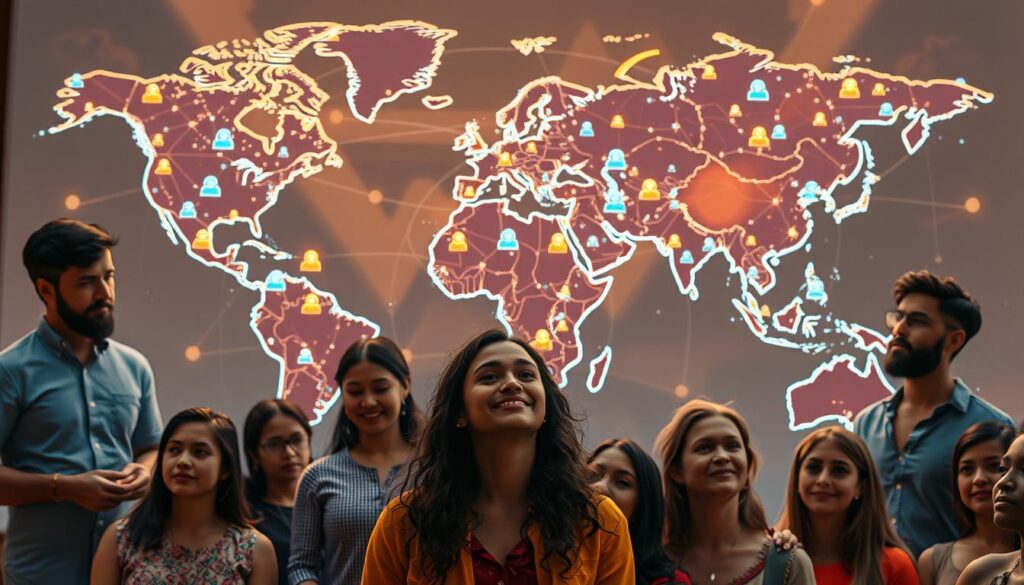
Leading Nations in ChatGPT Adoption
The United States dominates with 14.78% of total users, followed by India at 8.85%. Kenya surprises as third at 4.81%, showing strong mobile-first adoption. Other top countries include Brazil and the Philippines, where English proficiency aids usage.
Developing markets show unique patterns. In Kenya, chatgpt user growth spiked among small businesses using it for customer service. Urban areas in India report 3x higher adoption than rural zones due to internet access gaps.
Restricted Access Regions
Six nations block ChatGPT entirely: China, Russia, Iran, North Korea, Cuba, and Syria. Government concerns over misinformation and data control drive these bans. Despite restrictions, tech-savvy users often bypass blocks via VPNs—especially in academic circles.
Localization efforts aim to expand reach. OpenAI added 12 new languages in 2023, including Swahili and Hindi. Future updates may soften government resistance by offering localized content moderation tools.
- US: 14.78% of total users
- India: 8.85% (mobile-heavy usage)
- Kenya: 4.81% (small business focus)
Paid vs. Free Users: Subscription Trends
The shift from free to premium AI services marks a new phase in digital adoption. Over 10 million users now pay for ChatGPT Plus, generating $2.7 billion annually. This freemium model balances accessibility with advanced features, appealing to both individuals and businesses.

Benefits of ChatGPT Plus
Subscribers gain priority access during peak times and faster response speeds. The GPT-4o model, once exclusive to paying users, now partially serves free tiers—a strategic move to retain engagement. Key perks include:
- 20% faster processing for complex queries.
- Early access to beta features like voice interactions.
- Higher message limits for heavy workloads.
Enterprise Adoption and Impact
Businesses report 40% productivity gains with custom AI solutions. Industry-specific packages cater to sectors like healthcare and finance, offering tailored data security. API integrations drive efficiency:
| Sector | API Usage | Savings |
|---|---|---|
| Retail | 35% | $80K/year |
| Tech | 42% | $120K/year |
“By 2025, subscription revenue could reach $4 billion as enterprises scale AI workflows.”
Free users still dominate, but premium tiers fuel OpenAI’s growth—proving that value outweighs cost for power users.
How People Are Using ChatGPT
From creative writing to complex coding, ChatGPT serves diverse needs. Nearly half of users (47%) engage with it for fun or learning, while 42% of millennials rely on it for business tasks. Its adaptability makes it a Swiss Army knife for modern life.
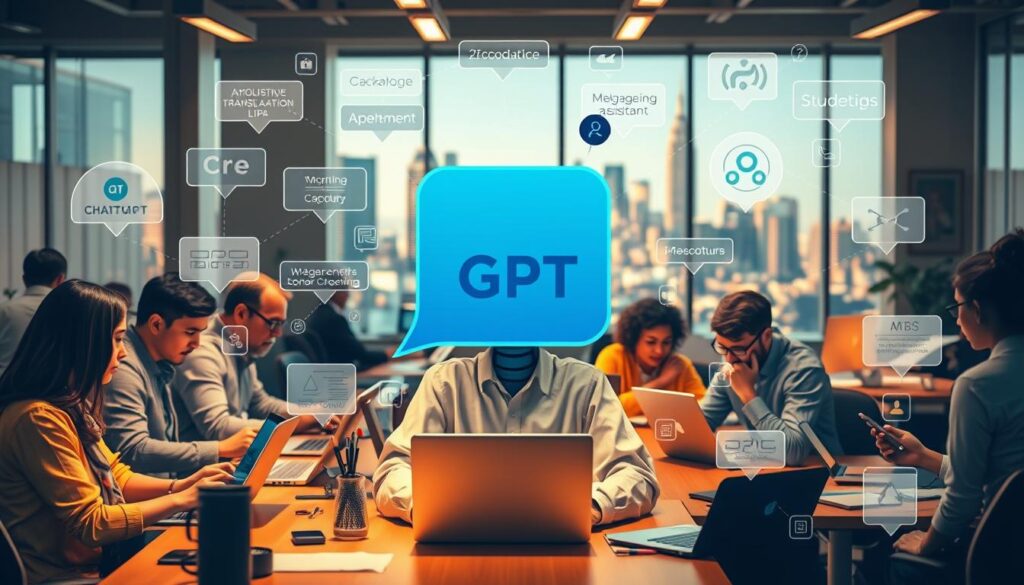
Everyday Applications
People use chatgpt to simplify routines. Meal planning, travel itineraries, and even bedtime stories for kids are common requests. Creative minds leverage it for poetry, RPG storytelling, or drafting social media captions.
Students and hobbyists dominate this space. One survey found 60% of users employ it for learning languages or troubleshooting tech issues. The tool’s conversational style makes it feel like a patient tutor.
Professional and Business Use Cases
In professional settings, ChatGPT automates tedious tasks. Meeting summaries, competitor analysis, and email drafting save hours weekly. Developers use chatgpt for debugging, while academics format papers faster.
Cross-platform integration expands its utility. Slack bots answer team queries, and Google Docs plugins refine drafts. A marketing director shared: “We cut content costs by 30% while doubling output.”
- Personal: Meal plans, travel hacks, creative writing.
- Business: Reports, data analysis, customer scripts.
- Niche: Code debugging, legal document templates.
Challenges and Limitations of ChatGPT
While ChatGPT delivers impressive capabilities, it faces notable hurdles in accuracy and privacy. These limitations affect user trust and practical applications across industries. Understanding them helps set realistic expectations for AI interactions.
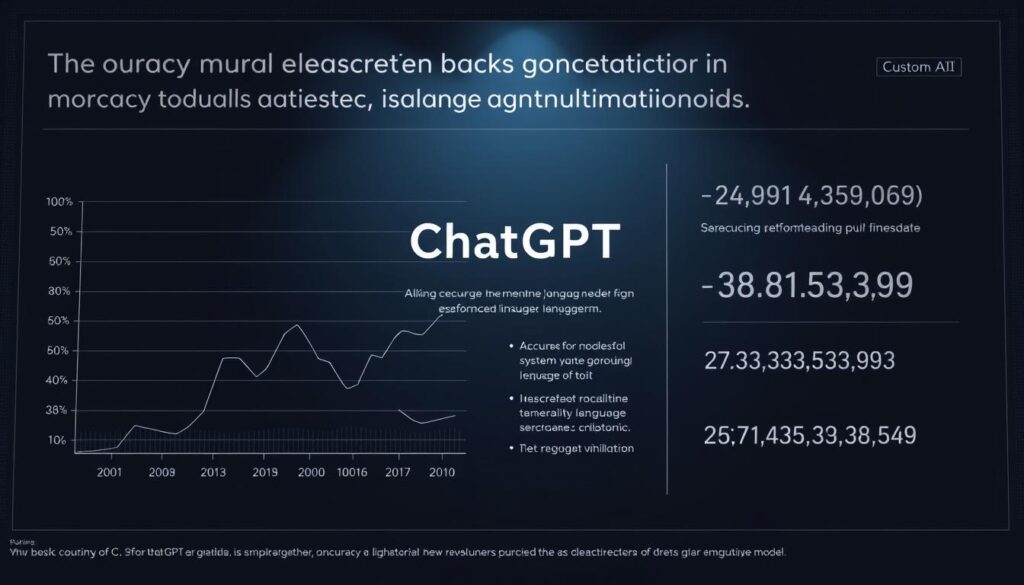
Accuracy and Misinformation
The platform sometimes generates plausible but incorrect responses—called “hallucinations.” Studies show hallucination rates vary by industry:
- Healthcare: 12% error rate in diagnostic suggestions
- Legal: 18% inaccuracy in contract clauses
- Academic: 9% factual errors in research summaries
Newer models show improvement. 70.2% of users prefer GPT-4 over GPT-3.5 for reliability. OpenAI reports an 82% reduction in disallowed content since 2022 updates.
| Version | Error Rate | User Preference |
|---|---|---|
| GPT-3.5 | 23% | 29.8% |
| GPT-4 | 14% | 70.2% |
Privacy and Ethical Concerns
Training data only includes information up to September 2021, creating knowledge gaps. Some enterprises block ChatGPT over:
- Copyright risks from reproduced content
- Employee prompts containing sensitive data
- Potential bias in responses
OpenAI retains conversations for 30 days unless users opt out. For creative professionals, explore these mind-blowing ChatGPT prompts while considering these limitations.
“Bias mitigation remains our top priority—we’ve reduced political slant by 40% in GPT-4.”
The Future of ChatGPT and OpenAI
OpenAI’s roadmap reveals ambitious plans to redefine human-AI interaction. With GPT-5 launching in 2025 and an $86 billion valuation, the company aims to transform how users experience artificial intelligence. Industry analysts predict 36.6% compound annual growth as new features roll out.
Next-Generation Capabilities
The upcoming GPT-5 model will introduce real-time internet connectivity, eliminating current knowledge cutoffs. Early tests show 40% improvements in accuracy across technical fields. Multimodal functionality will expand beyond text to seamless image and data analysis.

Vertical-specific versions are in development for healthcare, legal, and education sectors. These specialized models will understand industry jargon and compliance requirements. AR/VR integrations may soon allow users to interact with AI in three-dimensional spaces.
Market Expansion and Impact
Projections suggest ChatGPT could reach 500 million users by 2026, with enterprise adoption driving revenue. The competitive landscape includes:
- Customizable AI assistants for SMBs
- Localized models for emerging markets
- Workforce training programs for AI collaboration
Economists predict 23% of jobs will integrate AI tools by 2027. While some roles may change, new opportunities in prompt engineering and AI oversight will emerge. OpenAI’s partnerships with major tech firms ensure ChatGPT remains at the innovation forefront.
“We’re not just building better AI—we’re creating tools that amplify human potential across every sector.”
Conclusion: The Expanding Influence of ChatGPT
Artificial intelligence has found its everyday ally in ChatGPT, now serving 400 million weekly users and generating $2.7 billion in revenue. Its rapid adoption proves how deeply AI integrates into work and learning.
The platform democratizes access to advanced tools, from students to Fortune 500 teams. Industry-specific adaptations will soon redefine healthcare, legal, and creative fields. Yet ethical debates on accuracy and privacy persist.
One truth stands clear: ChatGPT has become the standard workplace copilot. As it evolves, its role in shaping productivity and innovation will only grow stronger.

